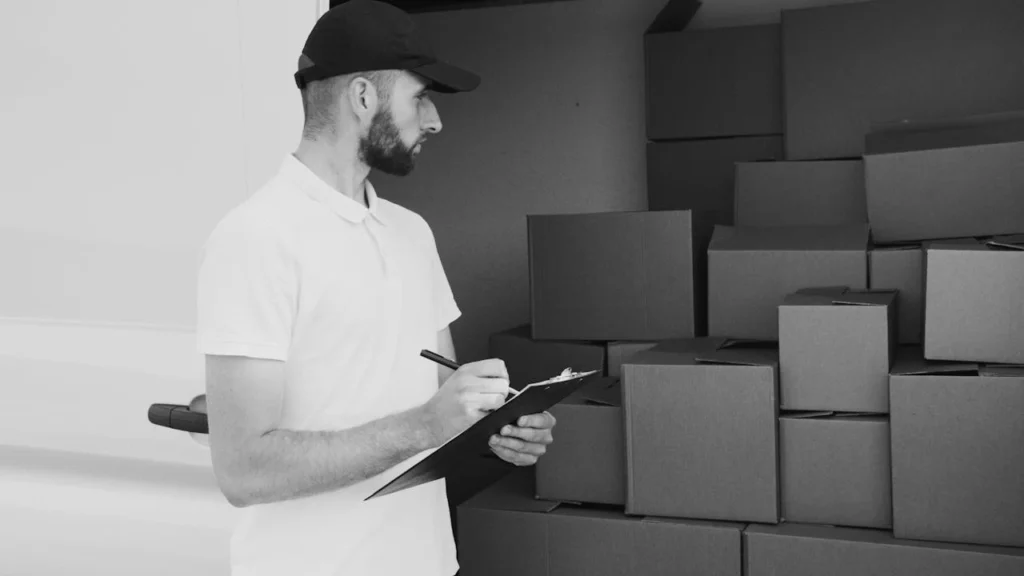Running a moving company isn’t easy. You’re dealing with stressed customers, tight schedules, heavy furniture, and a million things that can go wrong. While most moving business owners work hard to provide great service, there are some common mistakes that can hurt your profits, damage your reputation, and make life harder than it needs to be.
The good news? Most of these problems are easy to fix once you know what to look for. In this guide, we’ll walk through the 10 biggest mistakes moving companies make and give you practical solutions you can start using today.
1. Not Responding to Leads Fast Enough
The Problem
When someone needs a mover, they usually contact several companies at once. If you take hours (or even days) to get back to them, they’ve probably already booked with someone else. Studies show that the first moving company to call a potential customer is about 30% more likely to book the job.
Every hour you wait to respond is money walking out the door. Your competitors know this, and they’re calling while you’re still thinking about it.
The Solution
Set up a system to respond to new leads within minutes, not hours. This means:
- Turn on notifications for new inquiries from your website, email, and phone
- Use a CRM that alerts you immediately when someone fills out a quote request
- Have someone dedicated to calling leads back quickly during business hours
- Set up automatic email responses that let customers know you’ll call them soon
Speed matters more than you think. A quick response shows customers you’re professional, organized, and ready to help them right now.
2. Poor Customer Communication
The Problem
Moving is stressful for your customers. When they don’t hear from you, they start to worry. Did you forget about them? Will you show up on time? What if something goes wrong?
Many bad reviews happen not because of mistakes, but because companies stop communicating when problems come up. Customers would rather hear bad news than no news at all.
The Solution
Over-communicate with your customers throughout the entire process:
- Send a detailed email when they book that explains what to expect on moving day
- Call or text the day before to confirm the time and answer any last-minute questions
- Give customers a way to track their move or contact you during the job
- If there’s a delay or problem, call them immediately and explain what’s happening
Good communication turns problems into opportunities to show how professional you are. Customers will forgive mistakes if you’re honest and keep them informed.

3. Working at Full Capacity with No Backup
The Problem
It’s tempting to book every truck and every worker when a big job comes in. But what happens when a truck breaks down, a worker calls in sick, or a job takes longer than expected? Suddenly, you can’t handle the work you promised, and other customers suffer.
Running at 100% capacity leaves zero room for the unexpected problems that happen in the moving industry every single day.
The Solution
Always keep 2-3% of your resources available as backup:
- Don’t schedule all your trucks and crews at once
- Have a list of trusted backup movers you can call in emergencies
- Build extra time into your schedule for unexpected delays
- Turn down jobs that would push you beyond your comfortable capacity
It’s better to book fewer jobs and do them all well than to overbook and deliver poor service across the board. Your reputation is worth more than one extra job.
4. Not Using Technology to Manage Your Business
The Problem
Many moving companies still run on paper, whiteboards, and memory. This leads to missed appointments, lost customer information, pricing mistakes, and constant chaos. When everything lives in your head or on scattered pieces of paper, mistakes are guaranteed.
Modern customers also expect modern service. They want online booking, automated confirmations, and the ability to track their move like they track a pizza delivery.
The Solution
Invest in moving company software or a good CRM system that helps you:
- Track all leads and customer information in one place
- Calculate accurate quotes based on your pricing rules
- Send automatic emails and text reminders to customers
- Schedule jobs and assign crews without conflicts
- Create and send invoices quickly
- Track which marketing sources bring you the most business
Yes, software costs money. But the time you save and the mistakes you avoid will pay for it many times over. Plus, you’ll look more professional to customers.

5. Pricing Jobs Incorrectly
The Problem
Pricing mistakes hurt you in two ways. Price too high and you lose jobs to competitors. Price too low and you lose money on every move. Many moving companies guess at prices or use outdated calculations, which means they’re either leaving money on the table or working for less than they should.
Hidden costs like fuel, insurance, extra labor for stairs, and long carry distances can quickly turn a profitable job into a money-loser if you don’t account for them upfront.
The Solution
Create a clear pricing system that includes:
- Your actual costs (labor, fuel, insurance, truck maintenance, overhead)
- Extra charges for stairs, long distances, heavy items, and special handling
- A profit margin that makes your business sustainable
- Different rates for different types of moves (local, long-distance, commercial)
Use software that calculates prices automatically based on your rules. This ensures consistency and accuracy for every quote. And always give written estimates so there are no surprises on moving day.
6. Hiring Inexperienced or Unreliable Crews
The Problem
When you’re desperate to fill a job, it’s tempting to hire anyone who shows up. But inexperienced movers damage furniture, work slowly, upset customers, and can even hurt themselves or others. Last-minute contract workers who don’t know your procedures or care about your reputation can destroy years of hard work in a single bad move.
The Solution
Build a reliable team through:
- Proper hiring practices with background checks and references
- Training programs that teach your methods and customer service standards
- Fair pay and good treatment so experienced movers want to stay
- A small roster of trusted backup workers for busy times
- Never hiring random day laborers for important jobs
Your crew is your reputation. Every person you send to a customer’s home represents your entire company. Invest in good people and train them well.
7. Taking Jobs That Are Too Big or Complex
The Problem
It’s exciting when a huge job comes in, but if it’s beyond your capabilities, you’ll struggle to deliver. Taking on moves that require specialized equipment you don’t have, more crew members than you can provide, or expertise you haven’t developed yet leads to delays, damage, and unhappy customers.
Overconfidence can destroy your reputation faster than anything else.
The Solution
Know your limits and stick to them:
- Be honest about what types of moves you can handle
- Don’t bid on jobs that require equipment or expertise you don’t have
- Partner with or refer to specialized movers for complex jobs (pianos, antiques, art)
- Grow your capabilities gradually, not all at once
- Focus on doing a few types of moves really well
It’s okay to turn down work that isn’t a good fit. Customers respect honesty, and they’ll remember you for future jobs that match your strengths.

8. Neglecting to Get Proper Insurance and Documentation
The Problem
Moving without proper insurance and licensing is not only illegal in many places, but it also puts your entire business at risk. One accident or damaged item could lead to a lawsuit that wipes you out. Additionally, customers are getting smarter about checking credentials before hiring movers.
Operating without the right paperwork makes you look unprofessional and untrustworthy.
The Solution
Make sure you have:
- Proper business licenses for your state and city
- DOT number and registration for interstate moves
- Adequate liability insurance to protect customer belongings
- Workers’ compensation insurance for your crew
- All documentation clearly displayed on your website and trucks
- Written contracts for every job that spell out responsibilities
The cost of insurance and licensing is small compared to the cost of one major problem. Plus, being properly licensed helps you stand out from fly-by-night competitors.
9. Failing to Market Your Business Consistently
The Problem
Many moving company owners only think about marketing when business is slow. But marketing takes time to work, and by the time you’re in a slow period, it’s too late. Inconsistent marketing means you’re always feast or famine instead of having steady work year-round.
Relying only on word-of-mouth or outdated methods means you’re missing out on customers who are searching online right now.
The Solution
Create a simple marketing system that runs all the time:
- Keep your Google Business Profile updated with photos and good reviews
- Post regularly on social media with moving tips and success stories
- Ask happy customers for reviews (this is the most powerful marketing)
- Start a blog with helpful content (like this article!)
- Consider pay-per-click ads during slow seasons
- Build an email list and stay in touch with past customers
You don’t need to be a marketing expert. Just showing up consistently and being helpful online will put you ahead of most competitors.
10. Not Tracking Your Business Numbers
The Problem
If you don’t know your actual costs, profit margins, and where your best customers come from, you’re running your business blind. Many moving company owners only look at how much money is in the bank, without understanding whether they’re actually profitable or just busy.
Not knowing your numbers means you can’t make good decisions about pricing, hiring, or growing your business.
The Solution
Track these key numbers every month:
- Revenue per job and per crew member
- Actual cost per move (labor, fuel, wear and tear)
- Profit margin on each type of move
- Which marketing sources bring the most valuable customers
- Customer satisfaction and review ratings
- On-time performance and claims rate
Use simple spreadsheets or your CRM’s reporting tools to watch these metrics. When you know what’s working and what’s not, you can make smart decisions that grow your business instead of just keeping you busy.
Moving Forward
Running a successful moving company requires more than just strong backs and trucks. It takes good systems, clear communication, smart pricing, and constant attention to the details that make or break your reputation.
The good news is that none of these mistakes are hard to fix. Start with one or two areas where you’re struggling most, make improvements, and then move on to the next. Small changes add up to big results over time.

